Tasks Due Today from Week 2
This Week’s Topics
- Check-in
- Freewrite – Art of Noticing
- Meeting Request
- Reading Response Feedback
- Signs and Meaning in Communication Design
- Reading Response: Semiotics
- Week 3 Homework Checklist
Check-in (15+ min)
Freewrite – The Art of Noticing
Prompt: In your language of choice, write continuously in your notebook for 10 minutes about what you noticed while trying to Look for the Plot. Or write about what ever comes into your mind. Don’t edit, or correct, don’t stop, just write. Feel free to share or not.
Join the Art of Noticing Substack! And get new noticing tips each week.
This week’s task brought to you by Adel:
Look for the Plot
When you are walking to the subway or sitting in a cafe, notice who and what is around you? Imagine you are in movie. Ask youself: What is the plot? What’s about to happen here?
ART OF NOTICING
Next Week’s Prompt:
Take a Color Walk
Give yourself a block of uninterrupted time. Try not to talk or interact with other people during this time. Let color be your guide. Allow yourself to become sensitized to the color in your surroundings. What are the colors that you become aware of first? Choose a color (yellow, for example) and then follow it. See where it takes you. NOTE: please be careful and don’t get lost. 🙂
ART OF NOTICING – adapted from Color Walking
Meeting request
Please sign up for a remote or in-person meeting. If you are unavailable during the meeting slots, please contact me to find another time.
Schedule a MeetingActivities
Below, find the information covered in this session. Complete all of the following activities, videos, and assignments.
1. Reading Response – Why Theory? Feedback (10 min)
Let’s take a closer look at the Reading Response – Why Theory? guidelines and our Hypothesis annotations to ensure we are all on the same page. Did you have any problems or find any bugs?
Compare your response with the guidelines and other learner responses. Review, revise, and repost your reading response based on feedback/questions and discussions with your peers. Simply add another comment with your revision.
Feel free to comment on other learners’ responses by adding a nested reply. Be sure to reply to their comment directly so they see you response.
If you have any questions or concerns, please contact me.
2. Signs and Meaning in Communication Design (approx. 60 min)
Our next reading assignment will be from Hall, Sean. This Means This, This Means That : A User’s Guide to Semiotics, Laurence King Publishing, 2012. It is an introduction to visual semiotics and methods of communication. The field of semiotics is defined as the theory of signs.
…what is semiotics, and why is it important? Semiotics is defined as the theory of signs. The word “semiotics” comes from the Greek word semeiotikos, which means an interpreter of signs. Signing is vital to human existence because it underlies all forms of communication.
Sean Hall, This Means This, This means That
A little background
Ferdinand de Saussure, often called the father of semiotics, identified a sign as composed of a signifier and a signified. The signifier is the sound-image that we see, speak or hear to refer to the sign. The signified is the concept that our mind conjures in relation to the sign.
In his book Course in General Linguistics, Ferdinand de Saussure defined the parts of a Sign: the Signifier and the Signified. The Sign is the whole of these parts.
- Sign: A sign is anything that creates meaning. It is composed of a signifier and a signified.
- Signifier: A word, an image, a sound, or anything we see, speak, or hear to refer to the sign.
- Signified: The concept that our mind conjures in relation to the sign.
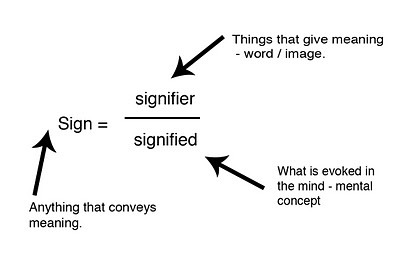
Signs and Meaning
For Saussure, signs can mean anything we agree that they mean! They can and do mean different things to different people. Meaning is constructed by human societies and cultures.
Signs are everywhere. In the images below, we can locate several signs. One example of a sign is the image of the apple. When you see the apple, you recognize it as a familiar piece of fruit. The same is true if we see or hear the word “apple” or if we speak/read another language:
The representation of the apple is a signifier. The concept that our mind conjures when we see this image is the signified. Together, these make up the sign.
The context also matters. If we are familiar with the story of Adam and Eve, in the context of the Garden of Eden, the signified is also “temptation” or “knowledge.” How did this happen?
What about the use of signs in advertising? What does the “Apple” signify in the 1976 ad for Apple Computers or the 2008 ad for DKNY Perfume?
As a side note: The use of the “Apple” and the Garden of Eden shows up a lot in the history of advertising. This writer-researcher based their PhD thesis on “...the Garden of Eden Imagery in Fashion Magazine Advertising.”
Forms of signs
The signs we use to communicate are often arbitrary, and their meaning develops over time through culture. Charles Sanders Pierce, an American philosopher, was another important figure in the field of semiotics. He believed that a sign stands for something else and showed that signs could take different forms.
- Icon: signifier resembles the signified (e.g. a graphic image of a dog resembles an actual dog)
- Symbol: arbitrary learned relationship between the signifier and signified (e.g. we must learn from others that a dollar sign $ refers to money)
- Index: signifier is caused by or linked to the signified (e.g. we associate smoke with fire)

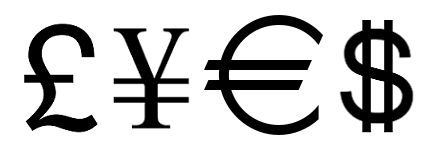

Non-literal / Rhetorical forms
As visual designers, we use language as words and images to communicate with our audience. It’s essential to understand how meaning is made through communication and to be aware of how our messages are transmitted and received. Non-literal forms of communication are important for design, advertising, illustration, filmmaking, fashion, and journalism because they help with the transmission of meaning. They can be persuasive, but depending on the audience, but can also confuse meaning.
Examples are simile, metaphor, metonym, synecdoche, and irony.
- Simile is comparison through the use of the word ‘as’ or ‘like.’ > “Like a Rock“
- Metaphor is a form of figurative or nonliteral language. > “Red Bull Gives You Wings!“
- Metonym (meh·tuh·nuhm) is when one thing stands in for another thing that is directly related to or closely associated with it. The New York Theatre scene > “Broadway,” Or a brand name stands in for a type of product > Band-Aids and Kleenex.
- Synecdoche (suh·nek·duh·kee) another type of metonym, using a figure of speech or visual that uses part of the whole to represent one of its parts or vice versa. Some examples include: “bread and butter” (for “livelihood”), “suits” (for “businesspeople”), or “threads” (for “clothing”).
- Irony is a technique used by storytellers to contrast expectations with reality, often in an amusing way. > Some examples in advertising
These are explained in this week’s reading in the chapter “Ways of Meaning” in This Means This, This Means That : A User’s Guide to Semiotics, by Sean Hall.
Metaphor In Advertising
Red Bull uses metaphor in their advertisements: Red Bull Gives You Wings! Drinking Red Bull doesn’t literally cause you to grow wings, but rather we relate it to gaining metaphorical flight in terms of energy or power. The definition of “give wings to” means to inspire or motivate someone to “fly” or soar – to achieve great things. Interestingly, Red Bull was sued for false advertising.
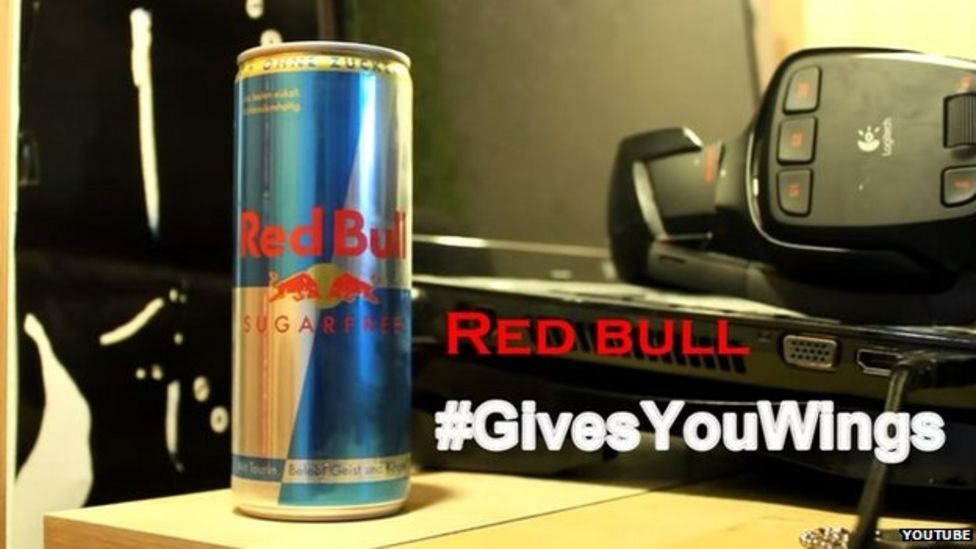
Check out the following videos to reinforce the following concepts: sign, signifier, signified, icon, index, symbol.
Here’s another video that does a good job of explaining some of these concepts, plus a few more! It also connects to the upcoming theories we will discuss.
3. Discussion (30-45 Minutes)
Break into groups and do some research with your group. Collectively, decide on the best examples from each of the following and share it with the class.
- In your own words, explain Saussure’s terms sign, signifier, and signified. Sometimes it’s helpful to use an example.
- Find 1 visual example from contemporary advertising and identify the sign(s) used to convey meaning. Explain why the sign(s) are either an icon, index, or symbol in Peirce’s terms.
- Find 1 visual example from contemporary advertising and explain which type of non-literal device (simile, metaphor, synecdoche, or irony) is used to sell the product or concept.
4. Assignment: Reading Response 2 (2+ Hours)
Follow the assignment guidelines and prompts for Reading Response – Semiotics.
DUE Wednesday before the next class to allow for feedback.
Resources
- Assignment: Reading Response – Semiotics
- Using Hypothesis
- Grammarly
Week 3 Homework Checklist
Below are all of the tasks, big and small, for this week. The due date is Wednesday, 11:59 pm before our next Thursday class. Timely completion of these tasks will contribute to your success in this course.
If you have any questions, don’t hesitate to reach out.
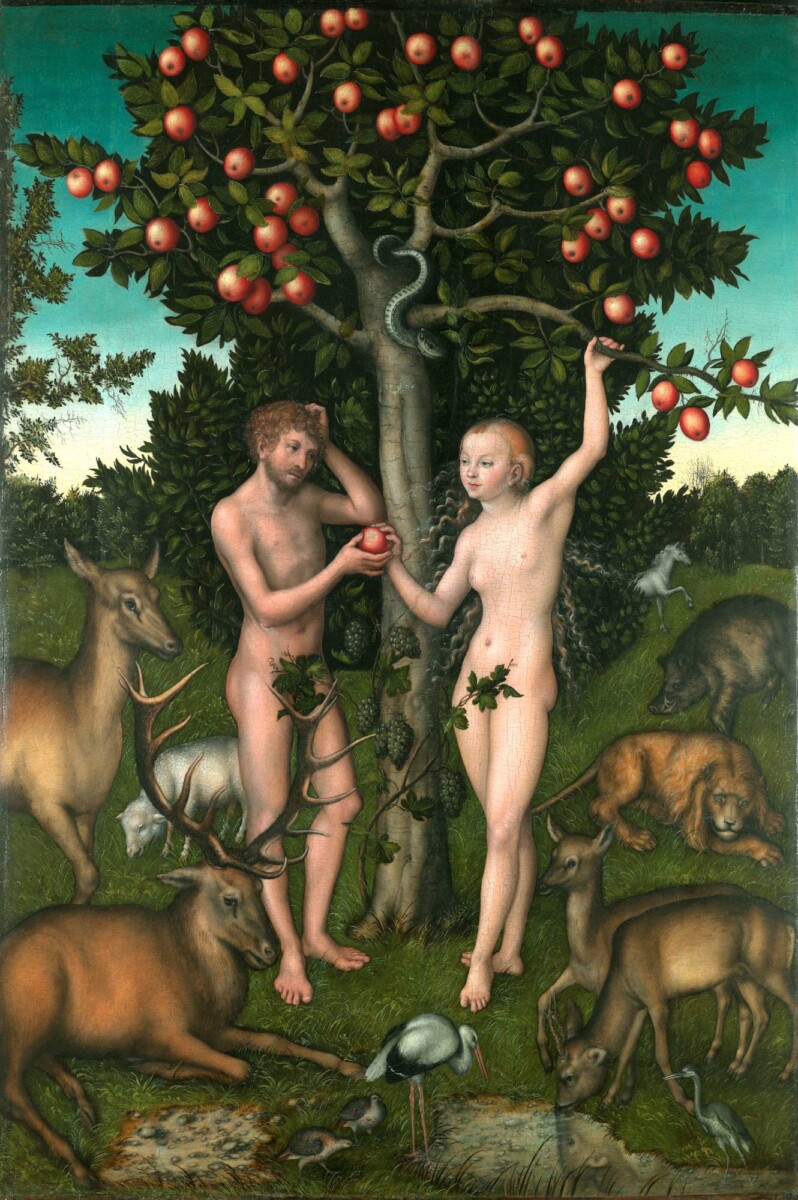

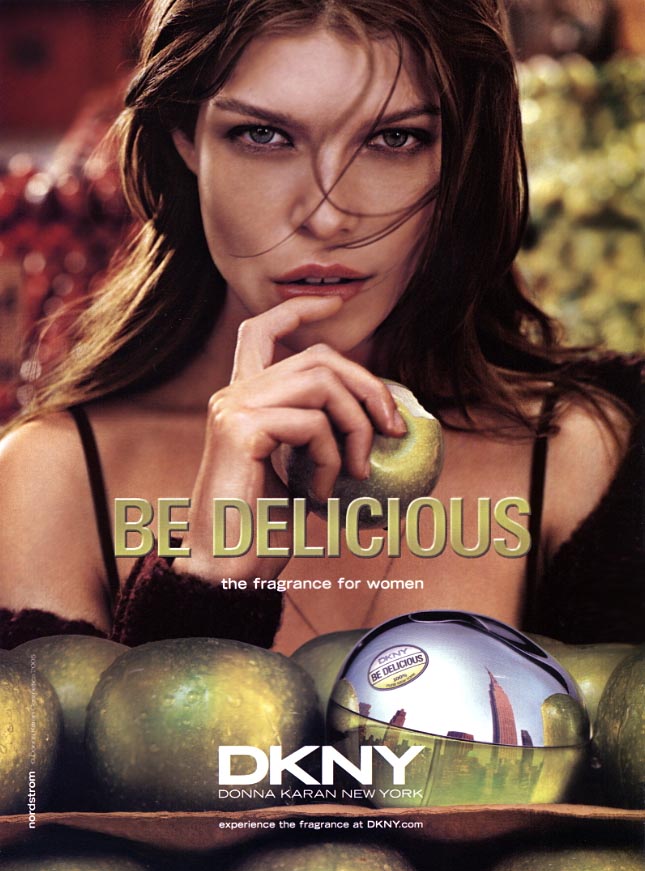





Leave a Reply